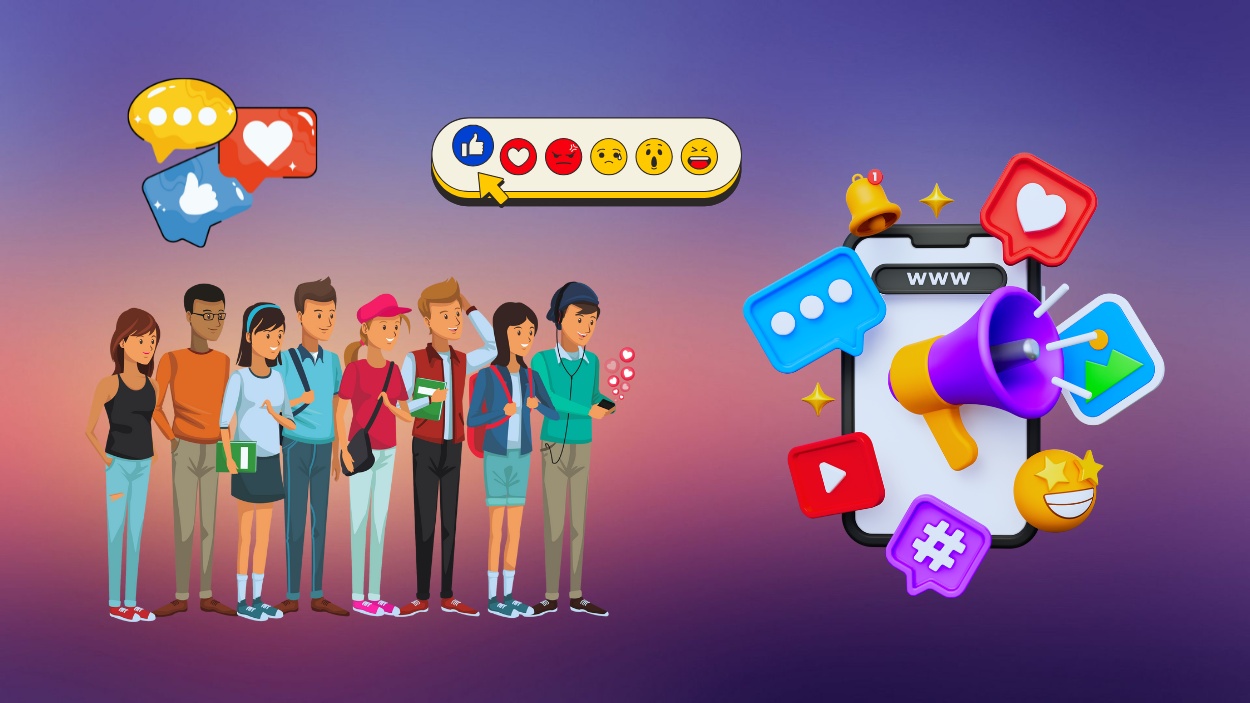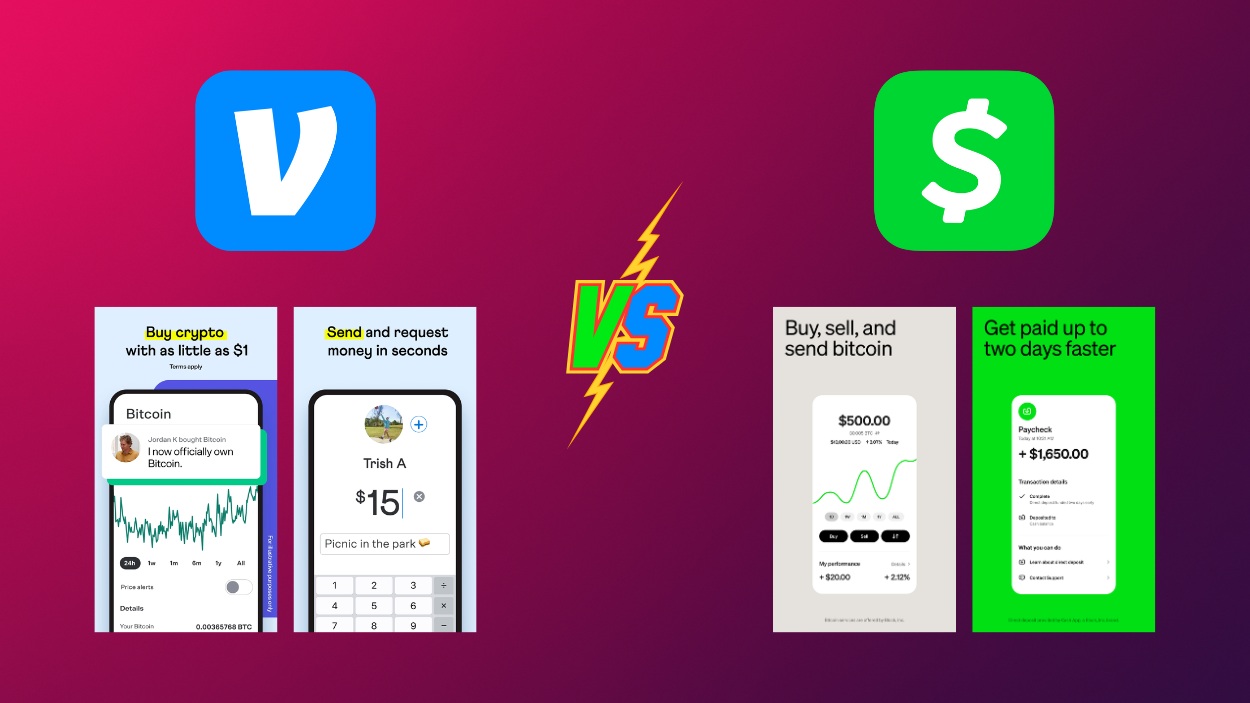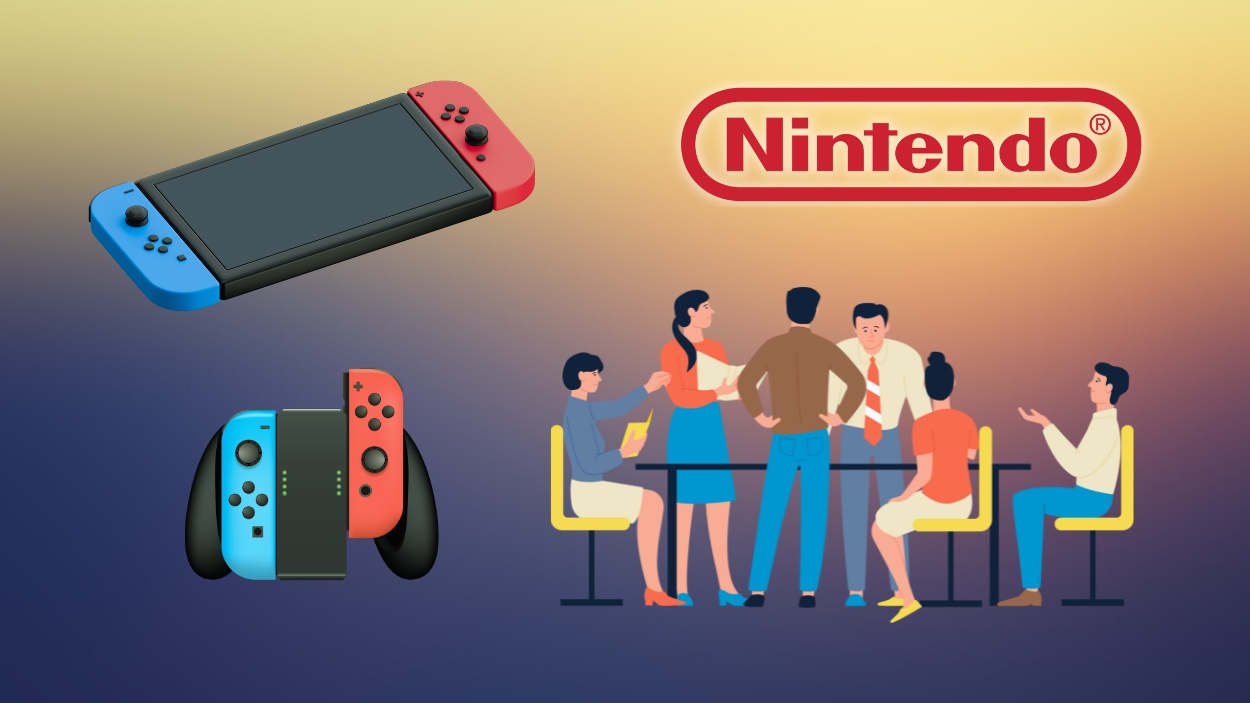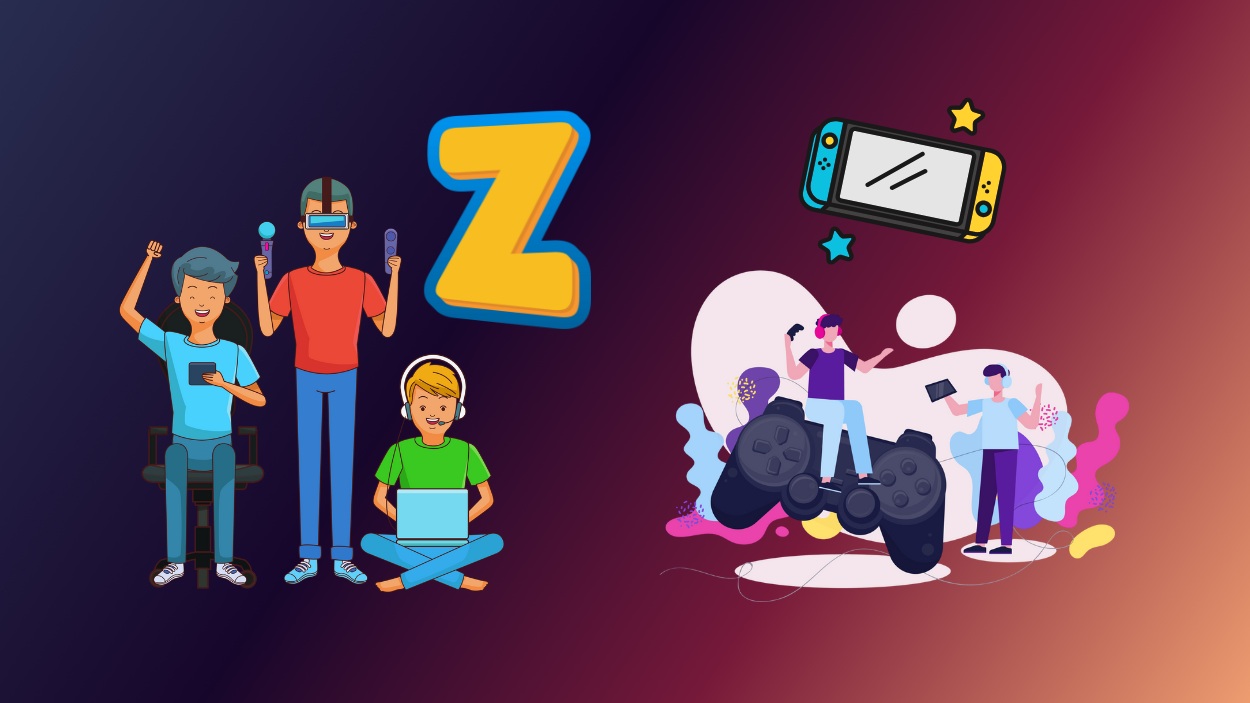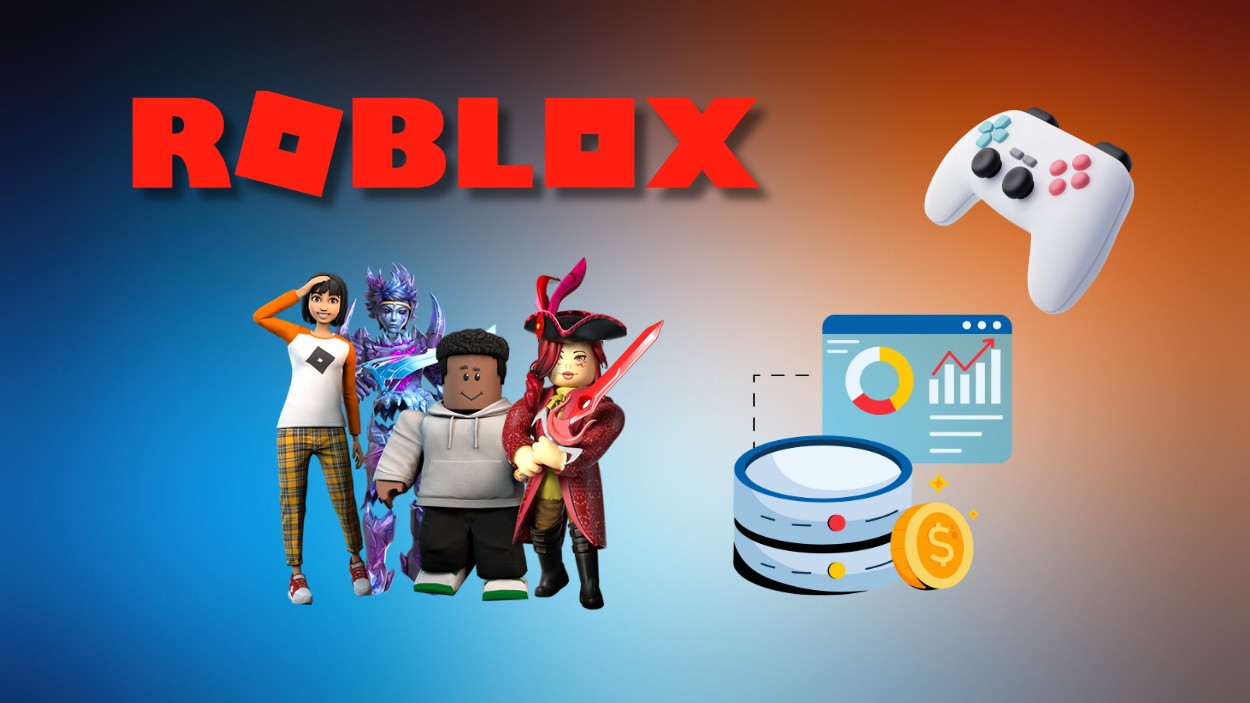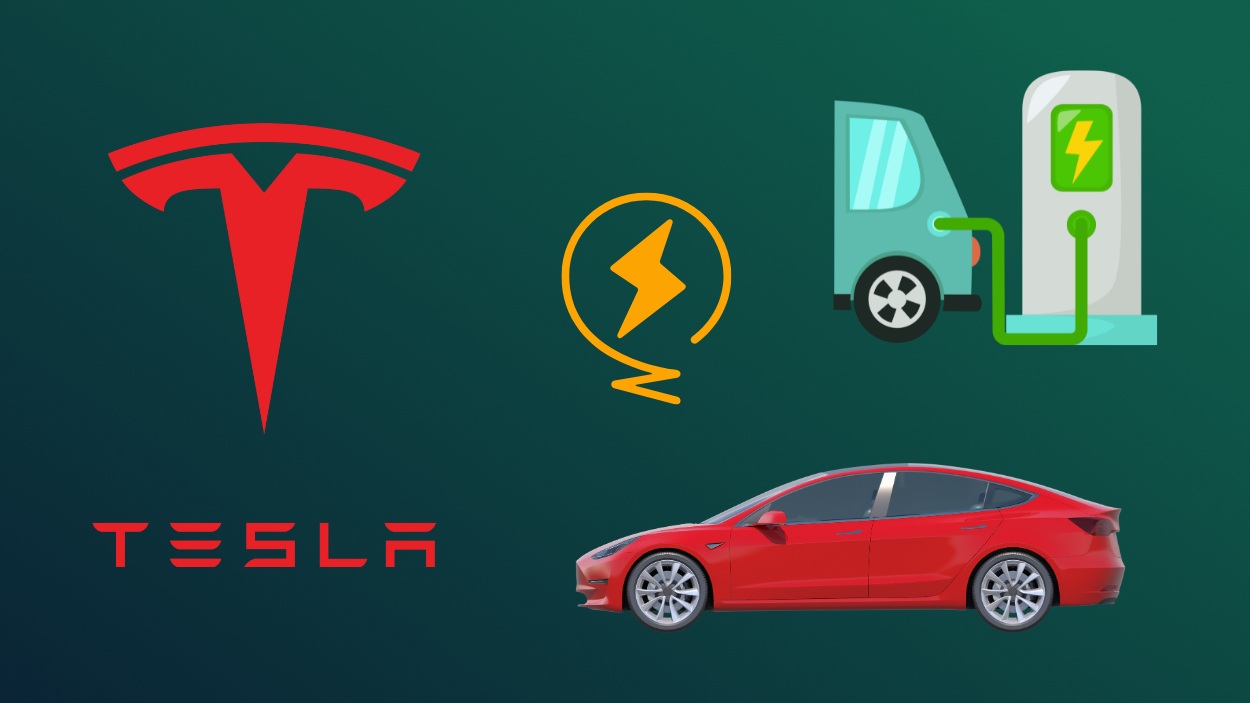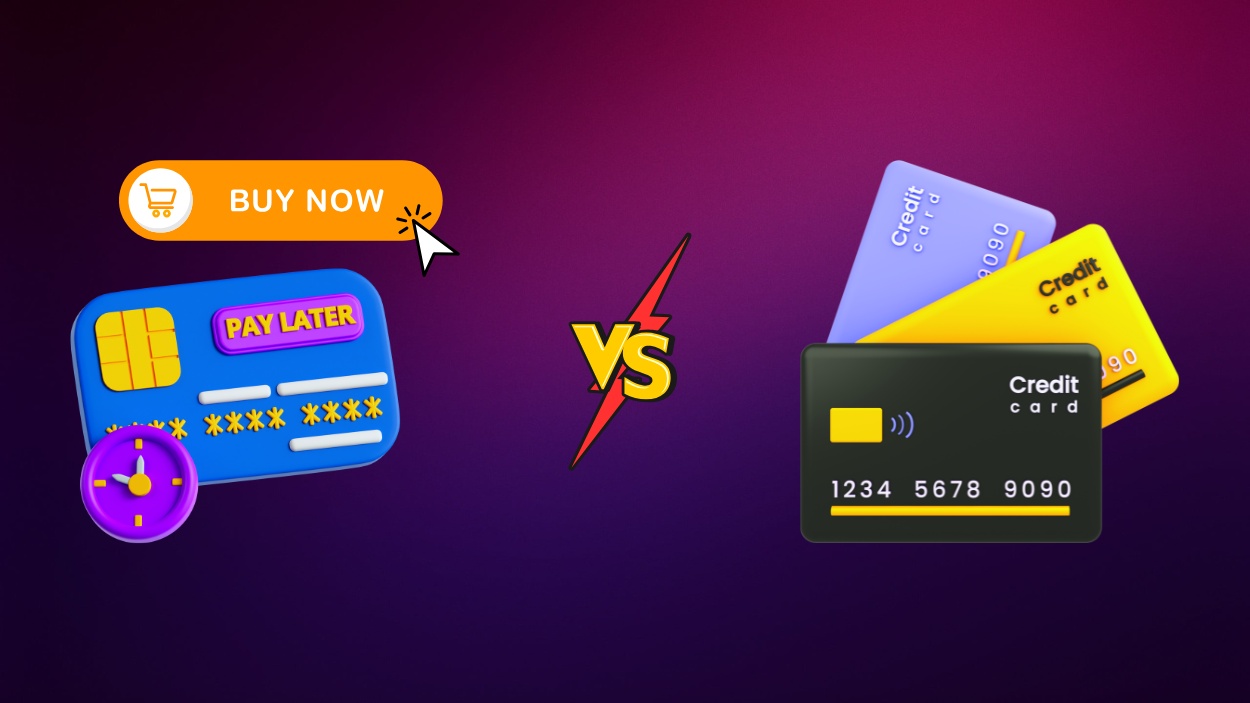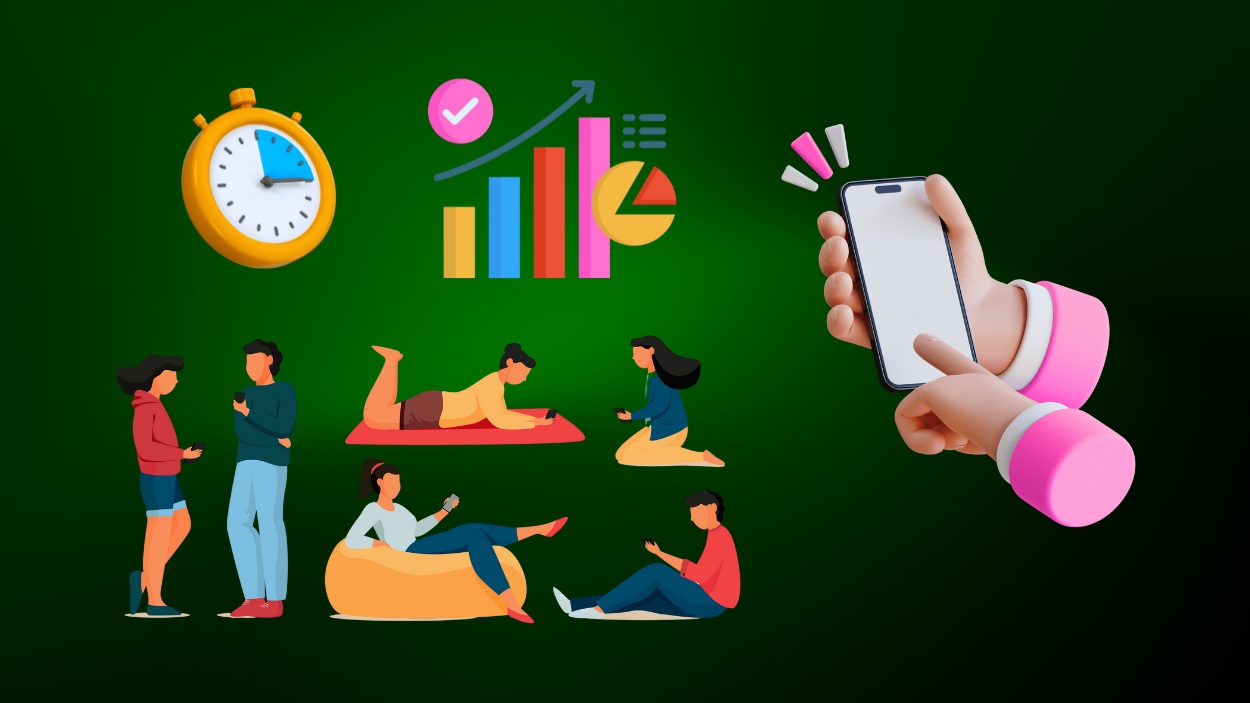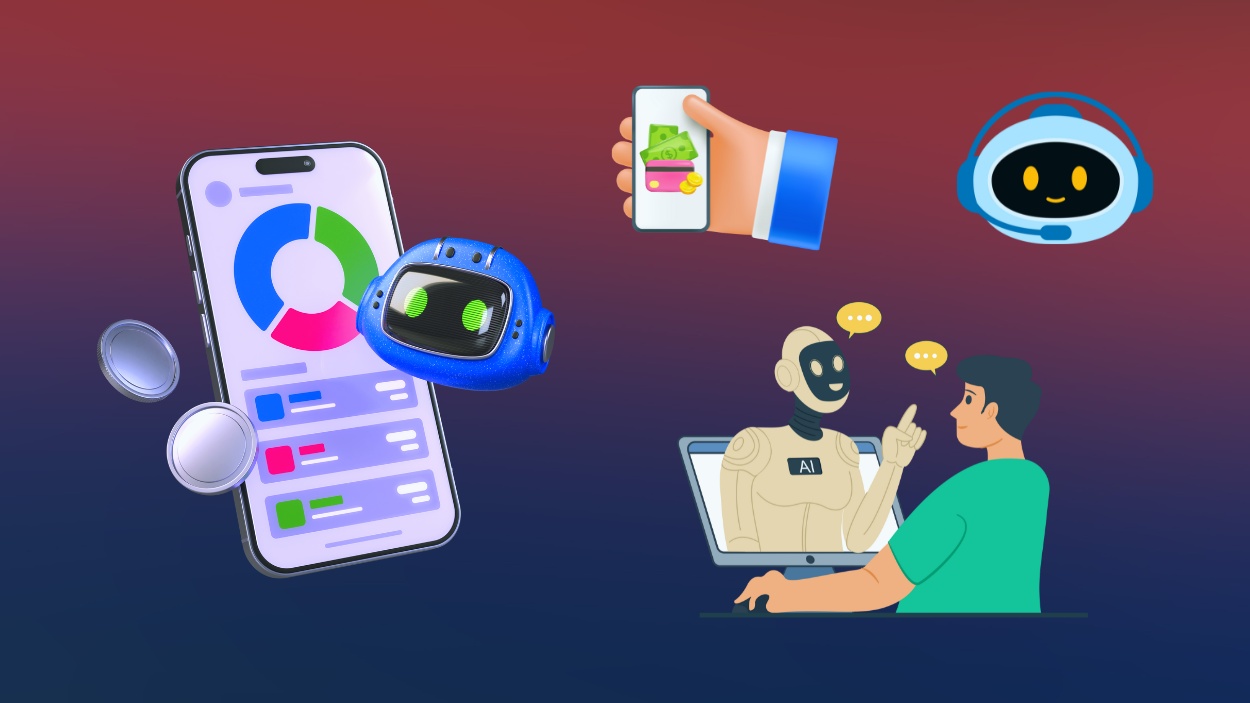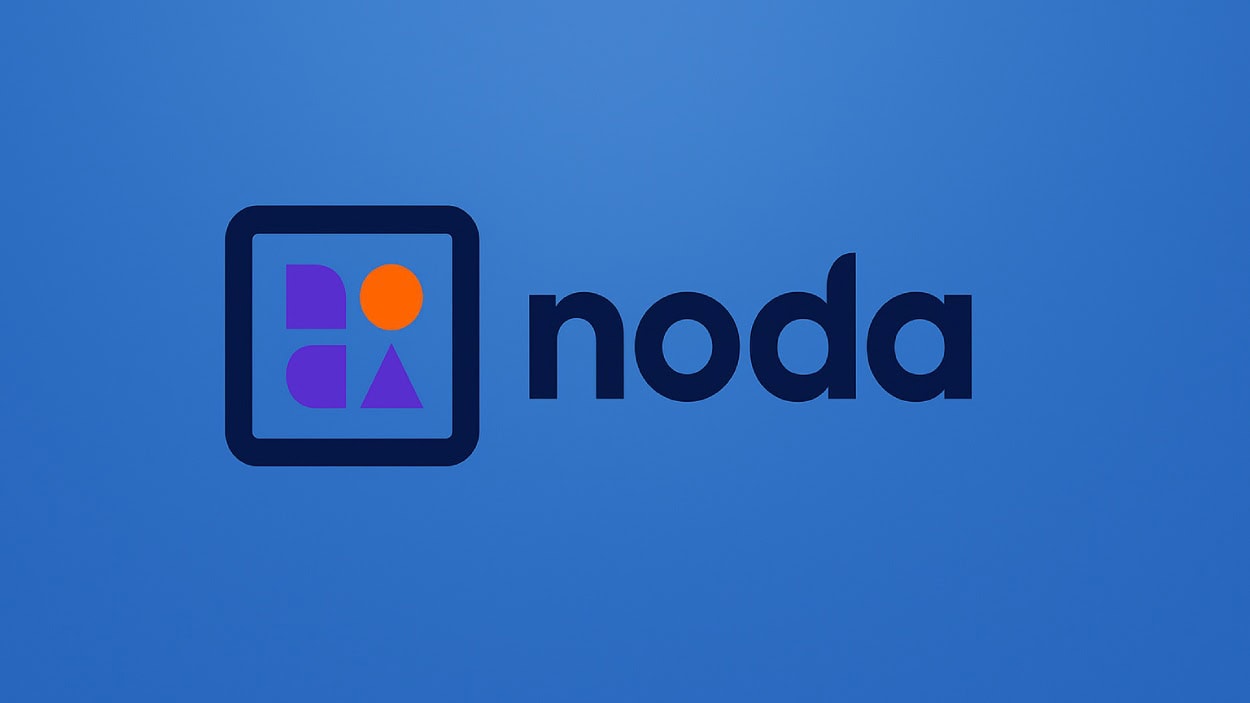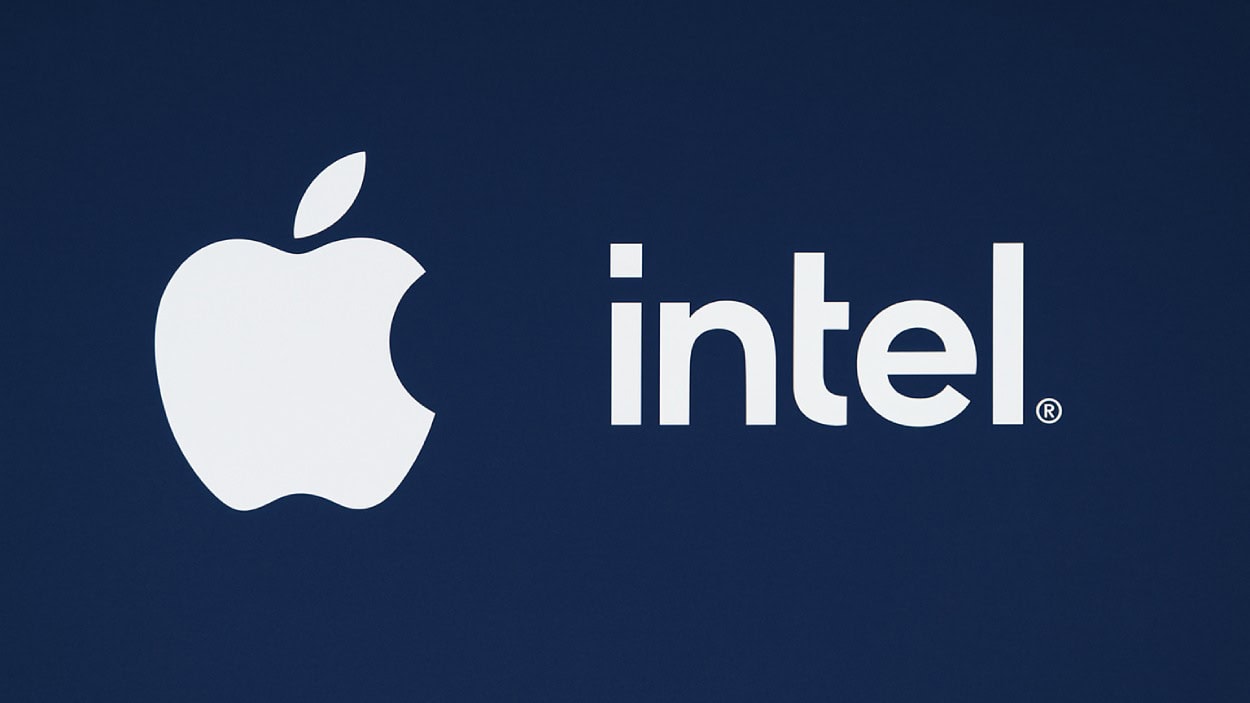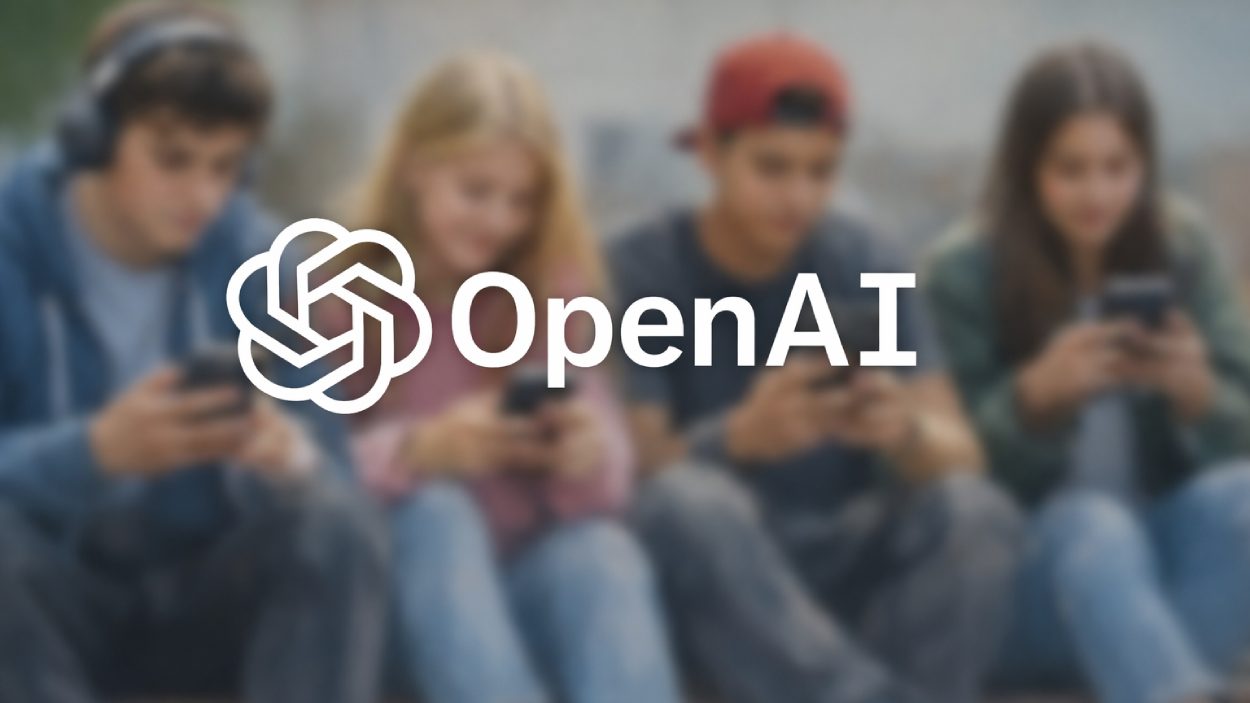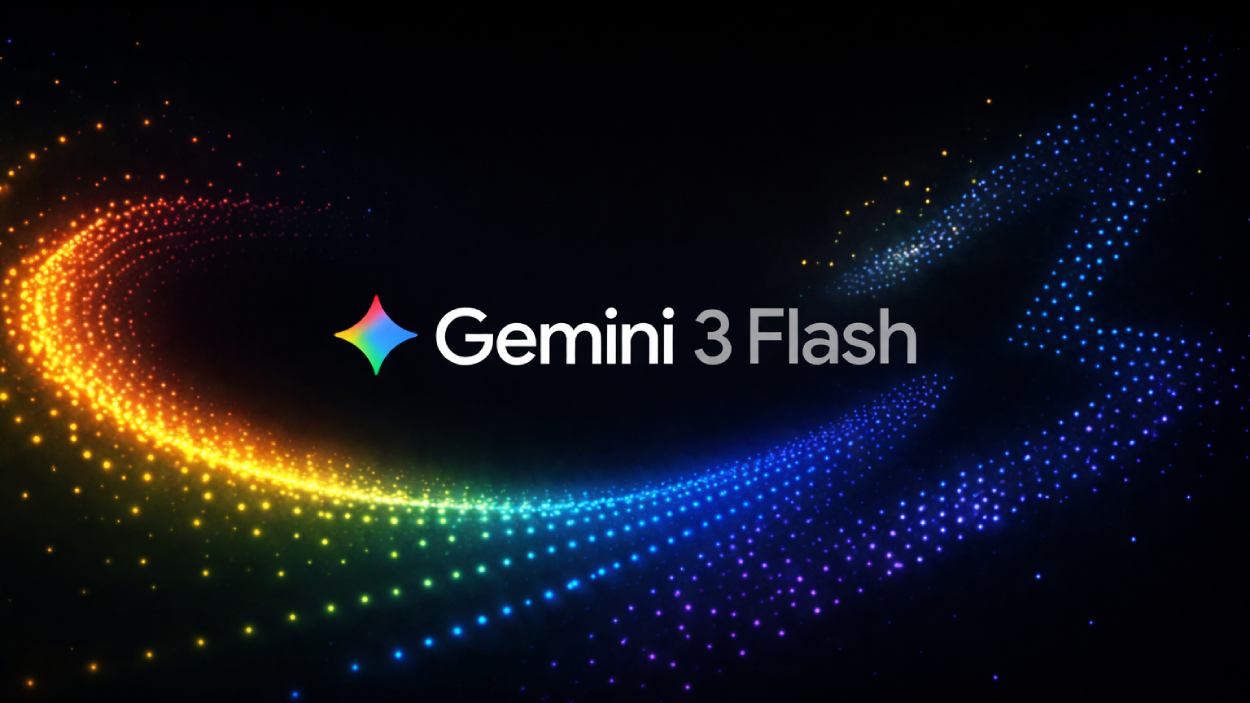Generation Alpha, born from 2010 onward, is growing up entirely in the digital era. From virtual classrooms to influencer-led shopping trends, their online experiences are shaping how they learn, play, and connect. Whether it’s gaming on Roblox or discovering brands on YouTube, their digital behavior is influencing industries from education to retail. This article explores the latest statistics on how Gen Alpha engages with social media in 2025.
Editor’s Choice
- 64% of U.S. children aged 8–12 report daily use of YouTube, TikTok, or both, reflecting the growing dominance of video-first platforms in their media habits.
- Generation Alpha’s direct and indirect economic impact will reach $5.46 trillion globally by 2029, driven by household influence and early brand loyalty.
- Approximately 90% of U.S. children are exposed to a screen, such as a smartphone, tablet, or TV, by their first birthday.
- Social media use rises 71% on weekends for this generation.
- Half of Gen Alpha discover brands on YouTube before other channels.
- Roblox’s daily active users surged to 112 million in 2025.
- 40% of teens follow live-streaming content regularly.
Recent Developments
- COPPA amendments in 2025 strengthened parental consent and data deletion requirements.
- California’s Age-Appropriate Design Code remains contested in court.
- U.S. Surgeon General advises limiting social media use to protect teen mental health.
- AI companion chatbots emerge as a new online presence for teens.
- Social platforms are experimenting with kid-safe design modes.
- Short-form video continues to dominate youth engagement trends.
- Educational institutions are adding media literacy programs tailored to Gen Alpha.
Parents’ Views on How Children Compare to Previous Generations
- Mental health is the only area where more parents believe children are worse off (37%) than better off (34%).
- Physical health shows a small positive gap, with 36% saying children are better off versus 33% who say worse off.
- Communication/socialization is seen positively, with 44% better off compared to 32% worse off.
- Developing skills for the workforce is rated better by 45% of parents, while 27% think children are worse off.
- Happiness levels are perceived as better by 45% of parents versus 23% who believe they are worse.
- The ability to be financially successful is viewed optimistically, with 46% saying better off and 21% saying worse off.
- Education/schooling receives strong positive ratings, with 55% better off versus 20% worse off.
- Creativity/innovation ranks highest for improvement, with 57% believing children are better off compared to 18% worse off.
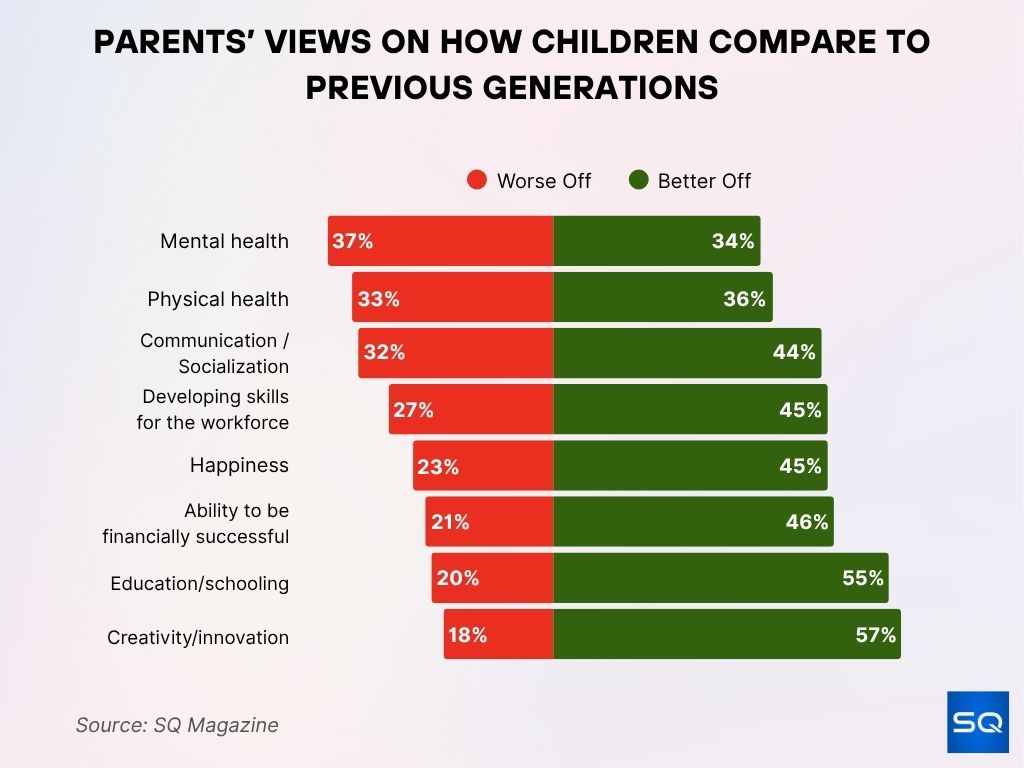
Generation Alpha: Population & Demographics
- Born in 2010, and later, the oldest are turning 15 in 2025.
- Predicted to be the largest generation in history by numbers.
- More racially and ethnically diverse than any prior generation.
- In the U.S., over 53% of children are children of color.
- A higher proportion of multilingual households compared to Gen Z.
- Average household tech ownership rates exceed prior generations.
- Large segments live in urban or suburban environments.
- Increasing proportion raised in blended or non-traditional families.
- By 2025, the global population of those born in 2010 and later, commonly referred to as Generation Alpha, will exceed 2 billion.
- Migration trends are influencing demographic compositions.
Social Media Usage Overview
- Around 15.9% of Gen Alpha are active social network users in 2025.
- Projected growth to 40.3% by 2029 as more reach their teens.
- Usage patterns show preference for video-centric platforms.
- Mobile-first engagement is the dominant access method.
- Platforms report higher watch time than direct posting activity.
- Weekend usage spikes significantly.
- Social interaction often blends gaming and content consumption.
- Many access social platforms through shared family devices.
- Reliance on visual content over text content is growing.
- Younger members prefer controlled sharing via private accounts.
Gen Alpha and Gen Z Daily Social Media Usage
- All Gen Alpha: 44% do not use social media; 20% spend less than 1 hour daily.
- Ages 0–4: 52% do not use social media; 22% use it less than 1 hour per day.
- Ages 5–7: 44% are non-users; 17% spend less than 1 hour daily.
- Ages 8–10: Only 31% are non-users; the highest usage in this group is 19% spending less than 1 hour, and 16% spending around 2 hours.
- Gen Z (13–17): Heavy use is common, with 41% spending more than 4 hours daily and 19% spending around 3 hours.
- Gen Z (18–26): 32% spend more than 4 hours daily; 18% each spend around 3 and 4 hours.
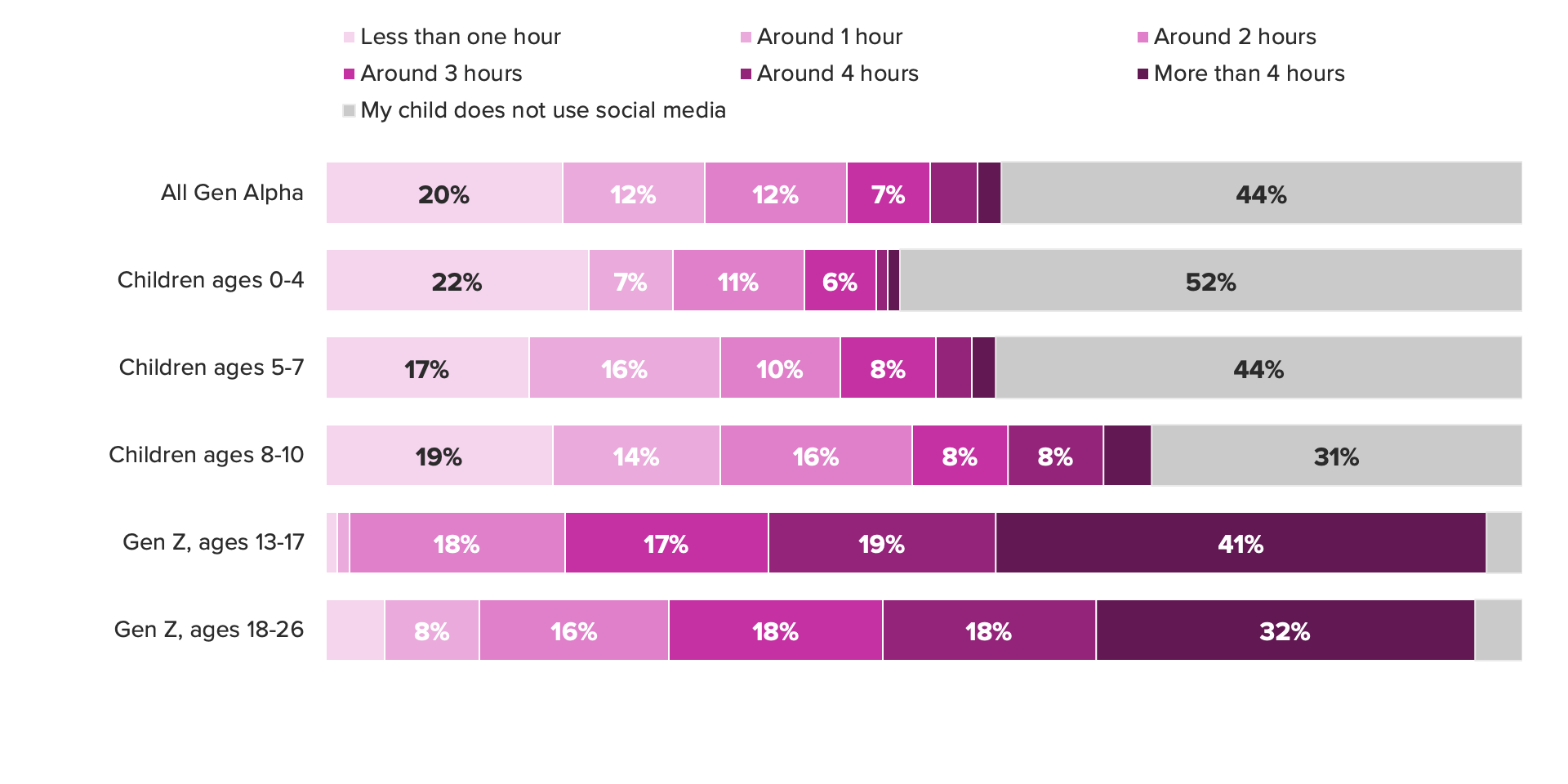
Most Popular Social Media Platforms
- YouTube leads as the most used platform daily among 8–12-year-olds.
- TikTok holds second place with steady growth in engagement.
- Roblox functions as both a game and a social space.
- Snapchat usage among preteens remains limited due to age policies.
- Instagram ranks lower in use for those under 13.
- Messaging apps integrated with gaming are gaining traction.
- Streaming services with social features are rising in popularity.
- Pinterest and Facebook have minimal traction in this age group.
- Platform popularity varies significantly by region.
- Early adoption trends influence long-term platform loyalty.
Early Tech Exposure
- By age 6, 43% of Gen Alpha children had used a tablet, and by age 10, 58% had a smartphone.
- Around 90% of young children used handheld electronic devices by age 1.
- From 2013 to 2017, daily mobile device use among U.S. kids under 9 rose from 15 to 48 minutes.
- Over 80% of parents say their Gen Alpha children use mobile devices 7–8 hours per day.
- Tablet or phone ownership among kids under 9 is about 51%.
- Voice-assistant use among Gen Alpha is widespread, signaling early comfort with AI interactions.
- Generation Alpha is viewed as the second wave of true “digital natives,” immersed in screens from infancy.
Gen Alpha Population by Race and Ethnicity
- White alone makes up the largest share of Gen Alpha at 71%.
- Hispanic children account for 26% of the population, representing the second-largest group.
- Black alone comprises 15% of Gen Alpha.
- Two or more races represent 7% of the generation.
- Asian children make up 6% of the population.
- Other ethnicities account for just 1% of Gen Alpha.
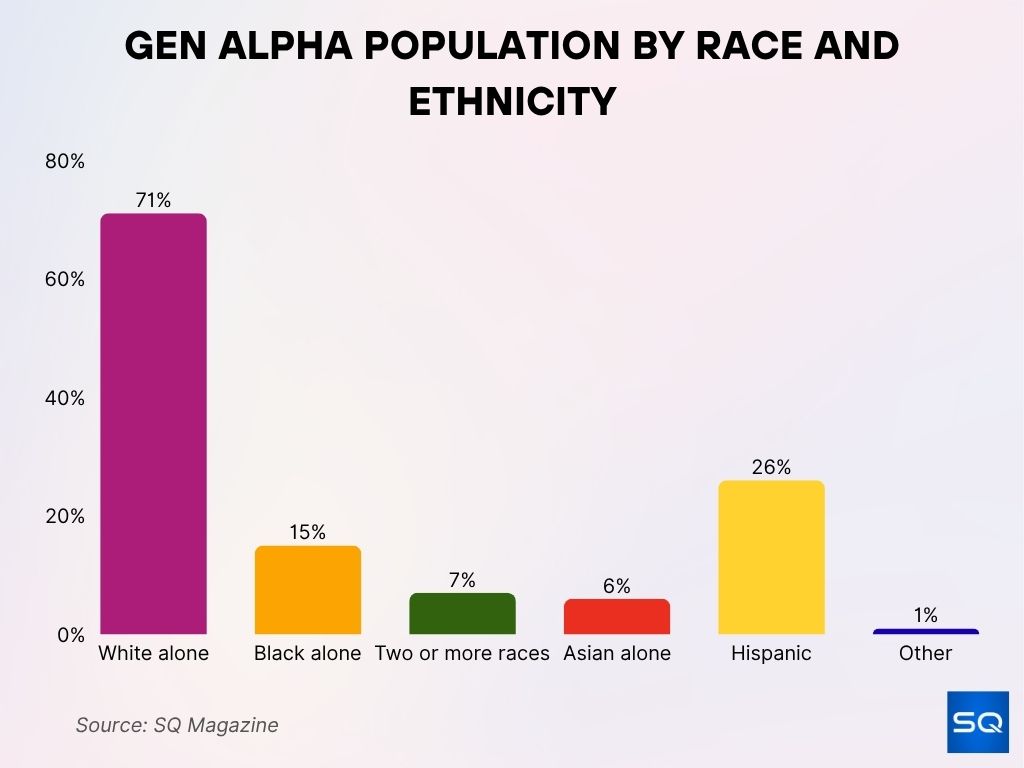
Platform Preferences & Usage Patterns
- YouTube and TikTok are used daily by 64% of 8–12-year-olds.
- Over 30% watch YouTube or Shorts for more than 2 hours daily.
- Roblox, a gaming-meets-social platform, is especially popular with younger Alphas.
- Social media usage increases by 26% after school and by 71% on weekends.
- 40% of teens follow live streams, gaming, or celebrity-related.
- TikTok interest among 12–15-year-olds grew by 24% in recent years.
- In the U.S., 15.9% of Generation Alpha will be active social media users in 2025, with adoption expected to rise to 40.3% by 2029 as more of the cohort reaches their teenage years.
Types of Content Favored
- Live streaming, gaming, and celebrity draw 4 in 10 Gen Alpha users.
- Short-form video dominates content consumption.
- Interactive, avatar-based games rank high in engagement.
- Many engage in “stealth mode” scrolling rather than posting.
- Increasingly relying on social media for information over search engines.
- Immersive, personalized experiences are highly valued.
- Gaming-related content is especially favored.
- Memes and trends drive quick shifts in interest.
Social Media and Gen Alpha: Early Start and Parental Concerns
- Over 50% of children use social media before the age of 12, while less than half do not.
- 73% of parents are concerned about their child’s social media use.
- 75% of parents actively monitor their child’s online activity.
- The average age of first exposure to social media is in early childhood.
- 40% of children own their first smartphone by around age 10.
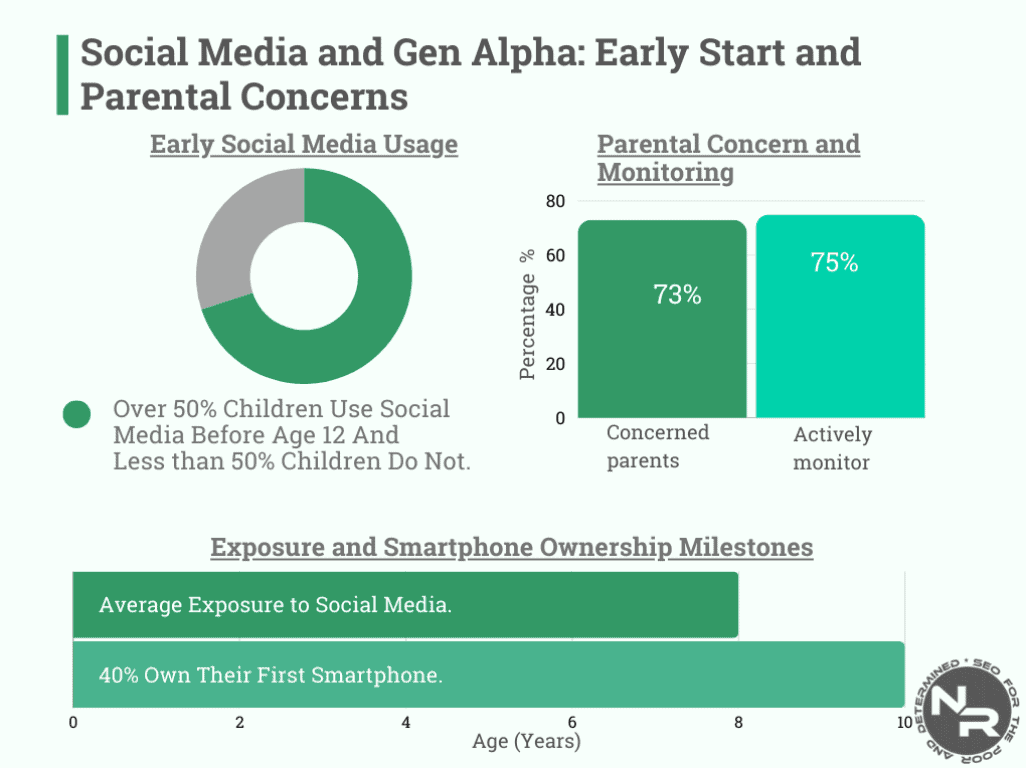
Influence on Purchasing Decisions
- Nearly half trust their favorite influencers as much as family members when making purchases.
- Economic impact projected to exceed $5.46 trillion by 2029.
- Some forecasts place the total impact at $8.2 trillion by 2029.
- Beauty and wellness trends are popular even among preteens.
- Media-driven habits influence family purchasing.
- Social media is a primary source for brand discovery.
- Expected to be a primary consumer group by 2027.
Role of Influencers & Content Creators
- 48% of Gen Alpha respondents said they trust recommendations from their favorite online influencers as much as those from family members.
- Beauty creators on TikTok and YouTube influence younger Alphas.
- Many browse influencer content without interacting.
- Online memes reflect strong cultural sway.
- Creators serve as sources of entertainment and learning.
- Influencer marketing will continue to grow with this cohort.
Entertainment & Gaming on Social Platforms
- Gaming time among under-9s rose 65% from 2020 to 2024.
- Roblox remains dominant for social and gaming interactions.
- Popular games include Minecraft, Among Us, and Toca Life World.
- Streaming of gameplay is a key entertainment activity.
- Alphas present curated versions of themselves online.
- Meme culture shapes humor and identity.
Gen Alpha Daily Social Media Usage by Age Group
- All Gen Alpha: 44% do not use social media; 15% spend less than 1 hour daily, while 7% spend more than 4 hours.
- Ages 0–2: Highest non-use rate at 48%; 16% use less than 1 hour, and 13% spend more than 4 hours daily.
- Ages 3–5: Majority (54%) do not use social media; 16% use less than 1 hour, with only 5% spending more than 4 hours.
- Ages 6–8: 43% are non-users; 15% spend around 2 hours, and 6% spend more than 4 hours per day.
- Ages 9–11: Lowest non-use rate at 28%; 16% spend around 2 hours, and 9% spend more than 4 hours daily.

Parental Involvement in Social Media Use
- 79% of parents of teens aged 16–17 set at least one online rule for their child, most often around spending limits and screen time.
- 49% of parents of older teens say it’s hard to control their child’s screen time, with challenges increasing as children age.
- Nearly two-thirds of parents of 8–15-year-olds monitor their child’s social media accounts at least occasionally.
- About 40% of parents report using parental control apps or platform-based tools to manage usage.
- Half of parents co-view or co-play digital content with their child at least once a week to stay engaged in their online world.
- Parental involvement is higher when schools provide regular online safety education, with 85% of those parents discussing lessons at home.
- One in three parents of 12–15-year-olds follows the same influencers as their child to better understand their online interests.
- Around 30% of parents report adjusting household rules in response to emerging apps like AI chatbots and new gaming platforms.
- Families with clear “tech-free” times or spaces report better balance between online and offline activities for children.
- Parental mediation is more effective when combined with open discussions about online experiences rather than only rule enforcement.
Safety, Privacy & Digital Wellbeing
- COPPA applies to under-13s and requires verifiable parental consent before collecting kids’ data, updated April 22, 2025, to strengthen notice, consent, and deletion rules.
- In California, enforcement of the Age-Appropriate Design Code Act remains in flux after multiple court rulings.
- 51% of UK children under 13 report using social media despite a 13+ minimum age.
- Only 32% of parents know the typical minimum age is 13.
- 93% of children 8–17 recall at least one online-safety lesson at school.
- 95% of youth 13–17 use social media, with over 3 hours per day doubling depression risk.
- AAP advises a Family Media Plan instead of strict time caps.
- WHO guidance caps sedentary screen time at ≤1 hour for age 2.
- Adolescents have a median of 51 pickups/day on their devices.
- 79% of parents of 16–17s set at least one online rule.
Gen Alpha’s Most Important Life Priorities
- Family tops the list for 71% of Gen Alpha respondents.
- Friends are important to 43%, showing strong social connections.
- Happiness is valued by 31%, making it the third-highest priority.
- Health matters to 19%, followed closely by School/Education at 17%.
- Gaming is a priority for 16%, while Money is important to 15%.
- Phones are essential for 13%, and Food and Drink matter to 12%.
- Music resonates with 10%, and iPad/Tablet usage is key for 8%.
- Sport and The Environment tie at 7% each, while TV is valued by 6%.
- Social Media ranks low at 5%, and Fame is the least important at 2%.
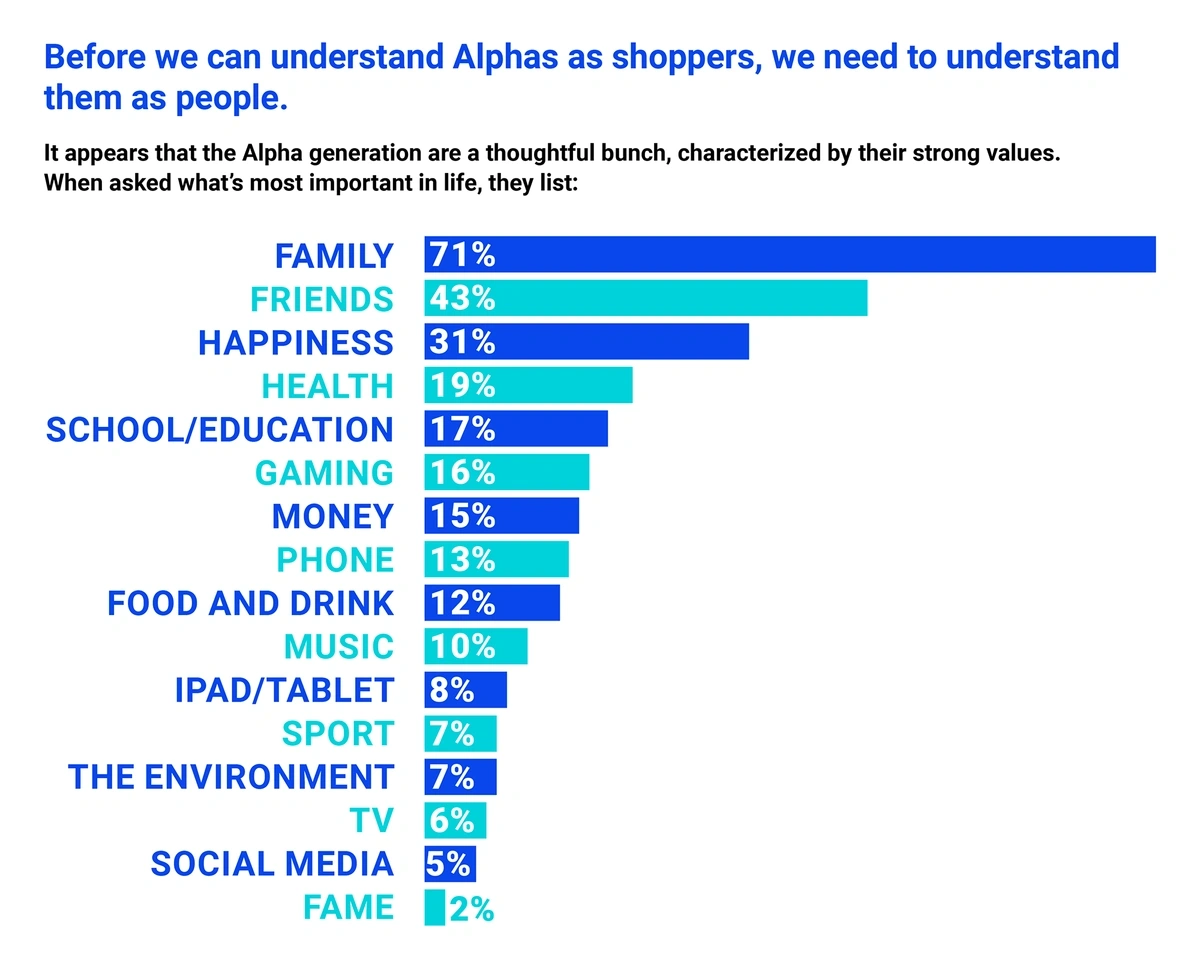
Mental Health & Media Consumption Behaviors
- 40% of high schoolers report persistent sadness or hopelessness.
- Only 23% of U.S. teens get the recommended 8 hours of sleep.
- Evening screen use is linked to reduced sleep quality.
- CDC notes that excess screen time plus poor sleep increases mental health risks.
- Adolescents are sensitive to social feedback online.
- Yale Medicine advises co-viewing and guiding teens’ media use.
- Sleep loss may be a major driver of teen mental health issues.
- 69% of 12–17s feel confident spotting fake content, though confidence is declining.
- Regular online safety education boosts usefulness to 97%.
Trust, Authenticity & Brand Expectations
- Half of Gen Alpha hears about brands first on YouTube.
- Celebrity endorsements sway only 14% in choosing favorites.
- Parents say Gen Alpha prefers familiar everyday brands.
- Many mistake sponsored posts as organic content.
- Brands operating social-first grow revenue faster.
- Gen Alpha forms preferences earlier, expecting seamless experiences.
- Over half of Gen Z prefer social content over traditional media.
- Trust is driven by competence and dependability.
Gen Alpha Parents’ Top Healthy Eating Priorities
- 66% of Gen Alpha parents prioritize their children eating fruits and vegetables.
- 53% emphasize fresh foods and variety in their child’s diet.
- 46% aim to limit sugary drinks, while 39% focus on reducing sugar consumption overall.
- 36% work to limit fast food, and 31% avoid processed foods.
- Restaurant eating is limited by 25%, while 24% avoid GMOs.
- 23% reduce sodium intake, and 22% limit snacks.
- Portion control is practiced by 21%, and 20% aim to limit fats.
- 19% value organic foods, while 18% each prioritize local foods and sustainable eating.
- Only 15% actively limit their child’s calorie intake.
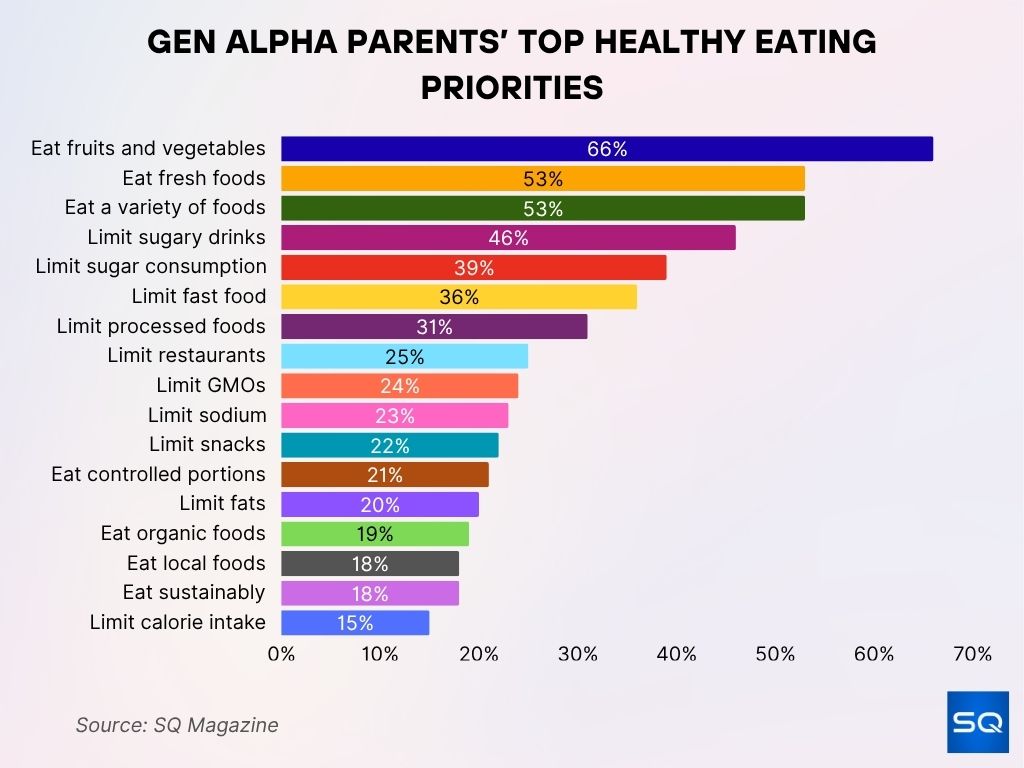
Offline vs. Online Time Balance
- AAP recommends balancing priorities over fixed screen limits.
- WHO caps screen time for young children at 1 hour.
- 49% of parents of 16 to 17-year-olds struggle to control screen time.
- 90% of parents of 3 to 17-year-olds say their child plays games.
- Teens’ daily YouTube use exceeds TikTok.
- Adolescents’ frequent phone pickups crowd out offline time.
- CDC links insufficient sleep to health and academic issues.
- Tech-free zones and co-viewing are recommended.
Demographic & Diversity Trends
- U.S. under-18 population has a diversity index of 68.5%.
- Children of color are the majority in the U.S. child population.
- White youth share continues to decline.
- One-third of multiracial Americans are under 18.
- Global digital divide leaves 90% of girls in low-income countries offline.
- Only 6% of kids in low-income countries have home internet.
- Hispanic children now make up about 27% of U.S. under-18s.
- Major cities already have majority-minority child populations.
Impact of Global Events on Social Media Behavior
- Social and video networks surpassed TV for news access in 2025.
- 90% of U.S. teens use YouTube, with many online constantly.
- Political events increase reliance on influencers for news.
- TikTok is used weekly for news by 17% of users.
- 72% of U.S. teens use AI companion bots.
- Roblox’s daily active users up to 112 million in 2025.
- Online safety and media literacy education are expanding.
- Policy advisories influence school debates on youth protections.
Future Predictions for Social Media Usage
- 16% of Gen Alpha in the U.S. will use social networks in 2025, with penetration expected to hit 40% by 2029, reflecting their aging into eligibility for most platforms.
- Adult time on social feeds may peak in 2025, pushing platforms toward formats Gen Alpha prefers.
- Social commerce ad spend projected to reach $118.4 billion by 2029.
- Trust in niche creators will grow over celebrity endorsements.
- Regulatory pressures will tighten with safer defaults and age-appropriate design.
- Generative AI will reshape youth content creation and search.
- Roblox’s growth suggests social gaming will remain central.
- Education will expand AI/media literacy programs for youth.
Conclusion
Gen Alpha’s social world is always-on, mobile-first, and increasingly mediated by creators, short-form video, and social gaming. The data shows progress on school-based safety education, persistent gaps in ad and AI literacy, and a clear need to protect sleep and offline time. As regulations evolve and platforms redesign for kid safety, brands that show authenticity, respect privacy, and support wellbeing will earn lasting trust. Keep this page handy, we’ll update it as 2025 numbers roll in and the oldest Alphas move deeper into their teen years.

